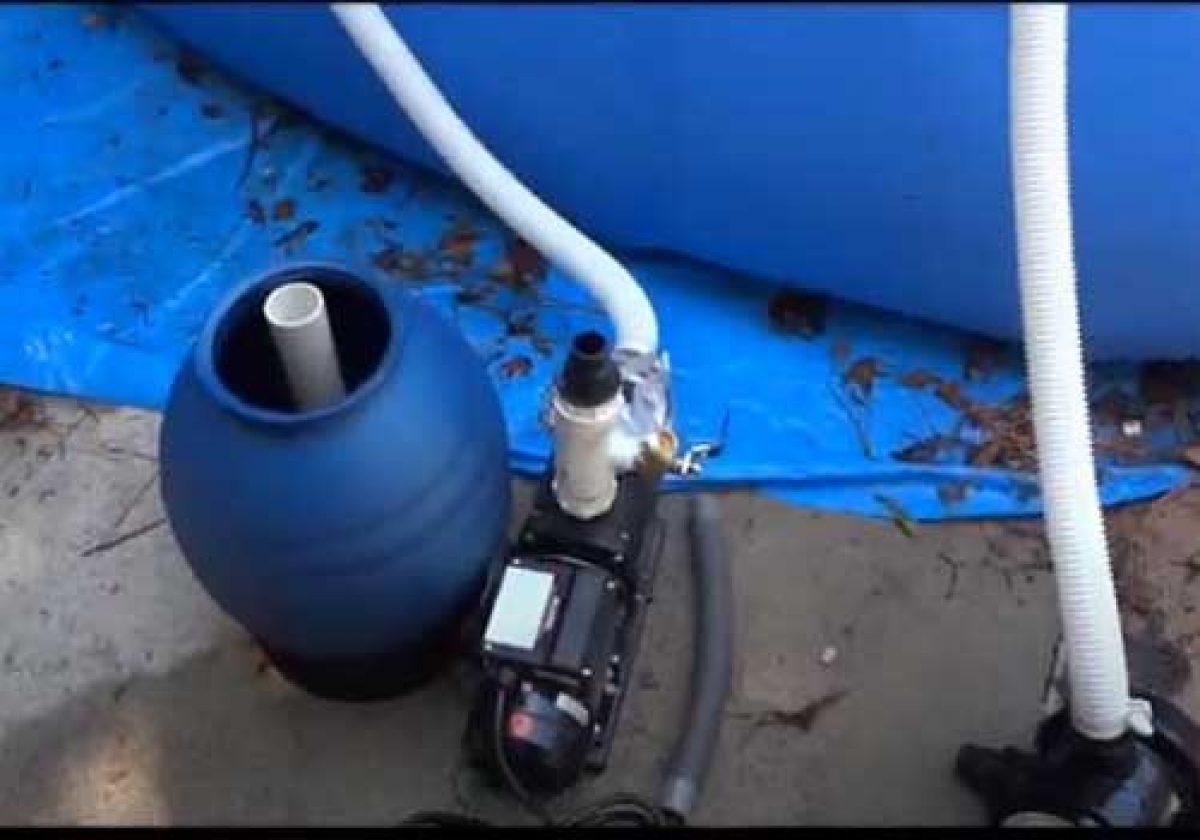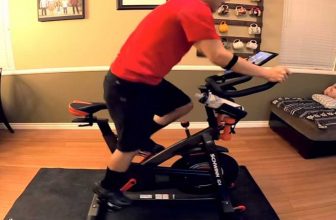Above Ground Pool Pump and Filter System-Installation and Maintenance Tips of 2023

If you want to build a pool faster or want to spend little money, an above-ground pool is the best option. The pool is less expensive and safe for kids to use with adult supervision. Just like other pools, you need to maintain your above-ground pool clean. Therefore, you should get the best above ground pool pump and filter system to maintain a clean pool.
The pump plays a significant role in circulating the water in the pool and pushes it through the filter to ensure the water stays clear. You should consider a high-quality pump with the right capacity that works silently. The filter is also essential in pool management because it eliminates hair, germs, dirt, and debris so they will not accumulate in your pool.
Having a good filter and pump helps you to keep your pool clean and safe to use. This guide to help you understand the importance, functioning, and installation of above-ground pumps and filters. Let’s get into details.
How to Install an Intex Above Ground Pool?
There are many types of above-ground pools, and they have different specifications. It can be tedious work to select the right one to suit your needs. Intex is one of the top manufacturers that provides durable, stable, and quality above-ground pools.
Intex pools are great to use in your backyard during summer to have fun with your friends and family. If you have an Intex above-ground pool or plan to buy one, it is great to know how to install the pool properly. Unlike other swimming pools, these are easy to set up, especially if you follow the above ground pool pump and filter installation diagram provided in the instructions. I will take you through a step-by-step guide on how to install Intex above-ground pool.
#1: Choose an Ideal Location
Before you set up the pool, think about a convenient location for the pool. You can’t set up the pool at any place for stability purposes. Consider locations with 1-2-inch levelness, and the level ground should also be wide like the pool’s diameter plus additional 2 feet.
If you install the pool on even ground, then you will get uneven water. You might end up facing sagging on either side, discomfort, or overflows. In the long run, the uneven ground can also negatively impact the structure of the pool.
Therefore, always ensure you get the best location for the pool where the ground is even. Another thing that you should avoid is setting up the pool near trees. While they can be a good source of shade, trees can drop leaves and debris in the pool, making it dirty.
Lastly, ensure that you level the concrete on the place you want to set up the pool. This is critical to ensure no sharp edges that can cause cracks and eventually tear the pool’s liner.
#2: Get Rid of Hazardous Objects
After choosing the right location for your Intex pool, the next step is to eliminate all kinds of hazardous objects. These include items like sticks, rocks, twigs, and other sharp items. Leaving such items on the surface can end up tearing the pool. Additionally, you should remove hardy grass because it can grow on the liner and the cloth with time.
#3: Lay a Tarp
Before you install the pool, ensure that you lay a tart underneath where your pool will sit. Why is this necessary? It is crucial because it prevents the pool from tearing and puncturing hence extending its life. Next, unfold the pool and keep it at the center while smoothing the sides out. Check if the blue inflatable ring of the pool is facing up and in a circular shape.
#4: Inflate the Ring
Get an air pump or a compressor to inflate the ring. When the ring gets firm, this is a sign that it is well inflated but not very hard. It is good to avoid overinflating the pool. On hot days, the air in the pool will expand, which is not a problem. However, if you had over-inflated the pool and the air expands, this can cause the pool to burst.
#5: Use Garden Hose to Fill the Pool
Close the drain plug and then use a garden hose to fill the pool for about one inch. You can request your family or even friends to stand in the pool when you fill the water and spread out the wrinkles at the bottom. Ensure you distribute the water even if the water doesn’t spread evenly, and then you can take the pool to an even ground.
Continue filling water, and you will notice the walls will begin to rise. The pool is full when the water is at the line close to the bottom of the inflatable ring.
#7: Connect Filter Pump
The majority of pool filters are designed with two hoses; the intake and the outbound. Connect each of the hoses to the right outlet and ensure they are tight enough. Next, remove the two plugs in the pool that block the water from getting into the filter pump’s hoses.
When the tubes start to fill with water, put a strainer in the unplugged intake hole to prevent debris and other solids from getting in the filter. Put the open pool hole piece in the unplugged outbound hole. Unscrew the top knob until you see water flowing out and then screw it.
It is essential to note that the filter should not run all the time. You can come up with a schedule where it works during the night and off during the day. Additionally, do not turn the filter on when people are swimming in the pool.
#8: Ladder Installation
Most Intex pools come with a ladder for safety purposes when you are getting in or out of the pool. The ladder installation process is easy because you just need to lay down the two sets of ladder legs and put the ladder to the height of the swimming pool entrance. You are now through with the installation of your Intex pool, and it is time to enjoy nice moments with your family.
Ideas to extend the longevity of your pool
When installing the pool, you can consider tips that will help boost the pool’s longevity. You should think about the right things to put under the pool to prevent punctures. There are several things that you can do under the pool to ensure it lasts for many years. The following materials can be great, but you need to first think about the size of your pool.
- Intex ground cloth
- Pool pads from other companies
- Interlocking foam tiles
- Old carpet
Check Out >
How to Install Sand Filter For Above Ground Pool?
Installing a sand filter for the above-ground pool is not a complicated task. If you follow the necessary steps, then it will be easy to connect the hoses the right way. But first, consider what size sand filter for the above ground pool you need. After that, you can start the above ground pool sand filter installation.
You can also check the above ground pool pump setup diagram to help you set up the sand filter the right way. Let us check some steps on how you can do the installation successfully.
1. Get the right sand
Before you begin the installation process, ensure that you have the right sand (high rate No.20 silica sand) the manufacturer indicates the amount of sand that you need.
2. Install the pool filter
Install the pool sand filter and then connect it after the pump. This will allow the water to pass through the pump for filtration. Install the pool filter on a level concrete slab about 6 feet above the level of water. Put the sand pool filter in a convenient position such that it is easy to access the drain, piping connections, and multiport valve.
3. Assemble the filter
You need to assemble the filter first before connecting the pool sand filter to the piping system. On one side of the filter, you will see a ¼ inch hole where you need to screw the pressure gauge. While doing this, check if the drain cap is in a secure place.
4. Fill the tank
Put water in the tank about halfway full. This provides a nice cushion when you pour the sand and also keeps the laterals in good condition.
5. Pipe and lateral assembly
Install the lateral assembly as well as the pipe inside the tank. Ensure all the 10 laterals are rotated up so that they can fit well in the hope on the top of the tank. Handle the laterals with care because they are fragile so they can break easily. Keep the lateral assembly and the pipe in the tank.
Next, rotate all the ten lateral assemblies at 90 degrees in a down position. You should ensure that the pipe is centered in the opening and then tape the pipe’s top so that sand doesn’t enter and cause clogging.
6. Pour sand
The sand filter package features a cardboard shield for the sand that you should place in the opening and within the pipe. Put sand gently in the pool sand filter until it covers all the laterals. As you pour the sand, keep leveling it while maintaining the pipe centered in the opening. Take care when leveling to avoid lifting the lateral assembly and the pipe off from the bottom of the tank.
7. Lubrication and tape removal
Use a silicone lubricant to lubricate the valve lightly. After doing that, take the tape away from the pipe’s top and then put the multiport control valve in the central pipe. Make sure you position the o-ring perfectly. Put a clamp around the valve flange and the tank and make sure to tighten the clamp loosely to make it easy to rotate the tank for easy and final positioning.
8. Connect the pump
Connect the port of the pump to the multiport valve on the pump’s discharge side. And then screw a thread adapter on the pump’s port. Use Teflon tape to seal the connections. Next, screw the adapter on the port of the pump and tighten it. Do not overtighten because the joint can fail to work.
The next step is to take a short piece of pipe and then glue it on the adapter. First, use a thin primer coat on the surfaces that you want to join (inside adapter and outside pipe). Wait for some minutes for the primer to dry and then apply some glue on both surfaces and then push the pipe immediately in the adapter. Make ¼ turn twist so that the glue can spread and wait for about 30 seconds.
9. Add piping elbows
You will need to screw an adapter on the pump’s discharge side and then add the piping and elbows you need to connect pump ports and filters. Then, connect the return port and add a union for maintenance purposes. Next, connect the waste port to the wastewater hose and then use a screwdriver to tighten the multiport valve flange clap.
At this point, it is now ready to work. You can choose to backwash the filter, but if there is large debris or dust, set the filter in the “filter setting” so that the laterals do not clog. After a few hours, you can begin the backwash cycle.
10. Backwash cycle
Turn the pump off and then fully depress the multiport handle in the backwash position. Ensure you roll down the waste line to the ideal section where you want to through the pool waste. Turn on the pump and check if there is enough suction, and all the discharge lines are open.
Keep the pump running for about 2 minutes until there is steady water flow from the waistline. This gets rid of the impurities and sand particles away from the sand media. Switch the pool pump off and then turn the handle to the rinse option. Next, turn on the pump and run the water until the water in the sight glass becomes clear.
Turn off the pump and then return the handle to the filter option. When you notice that the psi is between 8-10 above the clean filter readings, you need to backwash the filter again.
How to Change the Sand in Your sand filter for Intex Above Ground Pool
You need to maintain your above ground pool pump and filter system for better functioning. If you would like to enjoy your swimming pool clean, consider changing the sand in the pool filter for about 5-7 years. If you don’t change the sand after some time, it will start to break down, and there will be more debris that prevents efficient filtration.
When the pool sand is in such a condition, it can’t hold the contaminants. Therefore, you will start seeing the water in the pool cloudy. If you don’t change the sand when needed, pressure can build up in the filter, and it will be tough for the water to pass. Eventually, the water can look for a resistance path and cut through the sand, minimizing the pressure and eliminating filtering.
To prevent all these problems, it is great to change the sand every five years to enjoy a clean pool. Once you replace the sand, you will not have problems with cloudy water. Let us check a step-by-step guide on how you can change the sand in the sand filter system.
Items you need
- Mask
- Backwash hose
- Rubber plug or duct tape
- Flashlight
- Garden hose
- Utility knife
- Hacksaw
- Shop-vac
- Screwdriver
- Pool filter sand
Switch off the pump off and drain the water
This is the first thing you need to do when changing sand in your above ground pool pump and filter system. Also, ensure that the pump’s timer is not set to turn it on automatically soon. If you allow the pump to kick when dry, this can lead to damage.
Start by removing the drain plug located on the bottom of the pump and then let all the water drain. This can take some time to start this process in the morning and then continue in the evening.
Multiport valve removal
After the water has drained, remove the pipes or hoses connected to the multiport valve. If it is plumbed using a PVC pipe, then you will need to cut the pipe. After that, install the union fittings and then use a screwdriver to eliminate the collar that secures the tank valve. Twist gently and then pull up the multiport valve to get it off.
Cover the standpipe and remove the sand
You will find an open pipe in the tank where you have removed the valve. You need to cover this pipe with duct tape such that the sand doesn’t get inside. If you allow sand to get it, then it will be flushed in the pool when you turn on the pump.
With the help of the shop-vac, suck all the old sand. If you don’t have a shop-vac, you can do that manually with a plastic cup, although it will be time-consuming.
Rinse the tank and laterals
When almost all the sand is out, you will begin to see the standpipe’s arms branching. Use a garden hose to wash the remaining sand in the drain hole. You can also inspect with the flashlight if there are any damages on the laterals and standpipe. If you find cracks, repair them because they can let sand back into the pool.
Add water to the tank
Add water halfway in the tank and then return the drain plug back to the tank. Return the hose to the tank and then start filling. Next, place the laterals and the standpipe and keep them in place when the water is halfway. Before you replace the sand, add some water so that there can be a nice cushion to protect the laterals from the sand’s weight.
Add new sand
At this stage, you need to wear your mask to prevent you from breathing dust. Hold the sandbag and ensure one corner extends over the tank opening. Use the utility knife to open it and then wait for the sand to drain into the tank.
Add water
After adding all the sand to the tank, fill the top with water. Next, return the multiport valve, hoses, pies, and collar in place. Ensure that all the fittings fit securely and snugly. The next thing you need to do is fix the backwash hose and then turn the multiport valve to the backwash. Prime your pump and turn it on.
Let the filter backwash for about two minutes or to the point where you will see the water running clear. This eliminates all the sand dust and debris in the tank. Next, shut off the pump and set the multiport valve to the “rinse” function, and turn it on. Rinse the filter for about a minute.
Run the filter
Shut off the pump and set the valve to filter and then start the pump. While doing this, check the pressure gauge and you will see the normal running pressure of the filter and record it. Whenever you do regular pool maintenance, always check the gauge. Whenever you find that the psi is above the normal by ten, then backwash the filter.
Want to Know More Click here.
Final Words
Maintaining your swimming pool clean is essential for your health. Therefore, it is necessary to maintain your above-ground pool pump and filter system for the best performance. I have given you some tips on installing an above-ground pool (Intex), how to install a sand filter, and how to replace the sand filter for above-ground pools. I hope this detailed guide will help you get the most from your above-ground pool.






